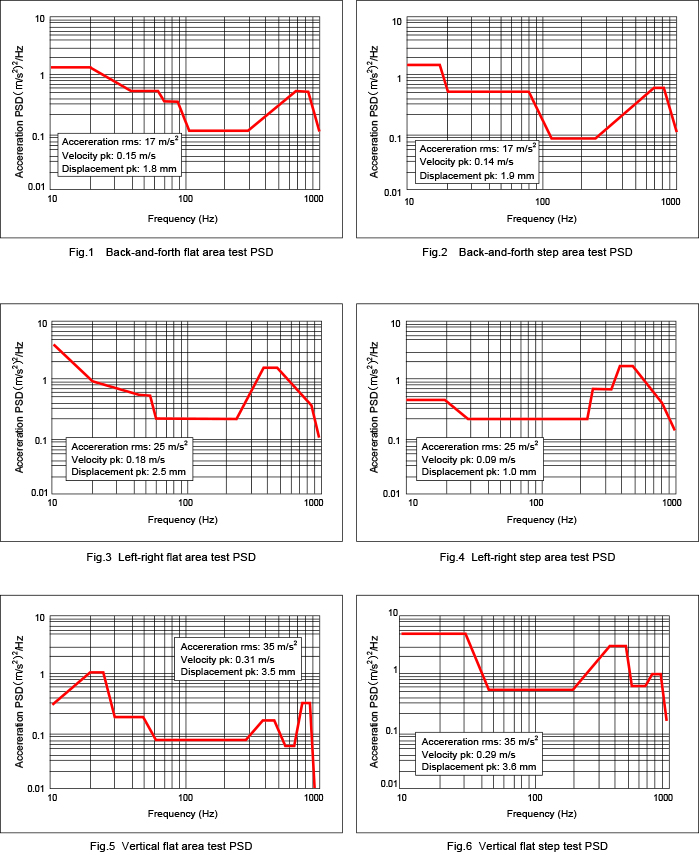Testing of electronics mounted on premises mobile trolleys
Test overview
■ Requirement
Develop test specifications to check the seismic resistance of electronic equipment mounted on trolleys that are frequently moved around the premises and test two types of EUT. The moving trolleys are pushed by people.
■ Usage scenarios
The use scenarios in table 1 were determined as a result of discussions.
■ EUT
Electronic equipment 320 mm × 300 mm × 250 mm, 12 kg.
■ Measurement/analysis
The following test specifications were developed by selecting a location for each of the scenarios, moving the dolly and recording and analysing the time-calendar waveforms of the vibration acceleration of the electronic equipment mounted on the dolly on a data recorder.
■ Test specifications
Smooth and rough concrete were unified as flat section tests. Both the flat section test and the step section test were random vibration tests. The maximum peak value of the test in each axial direction was matched to the maximum peak value obtained from the measurements. The test duration was therefore different for each test. An acceleration factor m = 4 was used.
Table 1/Table 2

Graph

Memo
Facilities used
Vibration test system with slip table: i220/SA1M/H6
Vibration controller: K2 software Random
Acceleration sensor: VP-32 × 1pcs.
Head expander: TBV-550S-i20-M (19 kg)
Dedicated fixture: Adaptor plate 13 kg
Test time
4 hours/1day

